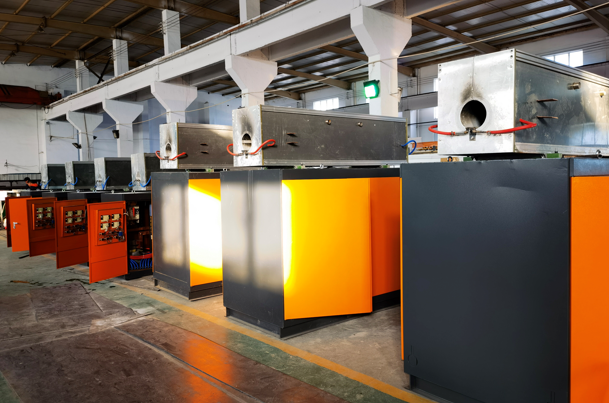Induction Furnace Applications
The biggest feature of induction heating is to heat the workpiece directly. Its advantages are good working conditions, fast heating of the workpiece, easy temperature control, no metal impurities, and small metal burnout during the heating process, so it is widely used. The main disadvantage of induction heating is the complexity of the equipment. At present, induction heating is mainly used for quenching, diathermy, smelting, brazing, and sintering in the machinery manufacturing industry and metallurgical industry.
1) Quenching is to heat the workpiece to a certain temperature and then quickly cool it down, so that the metallographic structure of the workpiece is changed to a certain extent, thereby increasing the hardness and wear resistance of the workpiece. However, the workpiece becomes brittle after quenching, and the fatigue resistance becomes worse. In order to solve this contradiction, surface quenching occurs, that is, only the metal surface is heated (without heating inside), and then quickly cooled down. In this way, the metal surface is quenched and the hardness and wear resistance of the workpiece is increased. Maintain a certain strength.
Induction heating is the most ideal heating method for surface hardening. Due to the proximity effect and skin effect, during induction heating, only the layer near the outer surface of the workpiece with a depth of △ directly heats, and there is very little internal heating; if the heating time is controlled, the heating power is increased, so that the heat of the layer is directly heated Too late to reach the inside of the workpiece, which can meet the quenching requirements of the surface
2) Diathermy makes the internal and surface temperatures of the entire workpiece roughly equal during the heating process, which is called diathermy. Diathermy is mainly used for heating before forging, hot stamping, extrusion, hot rolling and pipe bending, and annealing of the strip, pipe, and wire. The main advantages of induction heating used for diathermy are to improve the working conditions of workers, high heating efficiency, fast speed, reduce metal burn loss, easy to control temperature, ensure heating quality, easy to form automatic line production, etc., so it is more and more widely used application.
3) Smelting means that when a medium-frequency alternating current is passed through the coil in the furnace, the charge in the furnace can be heated and melted, and the liquid metal can be heated to the required temperature.


